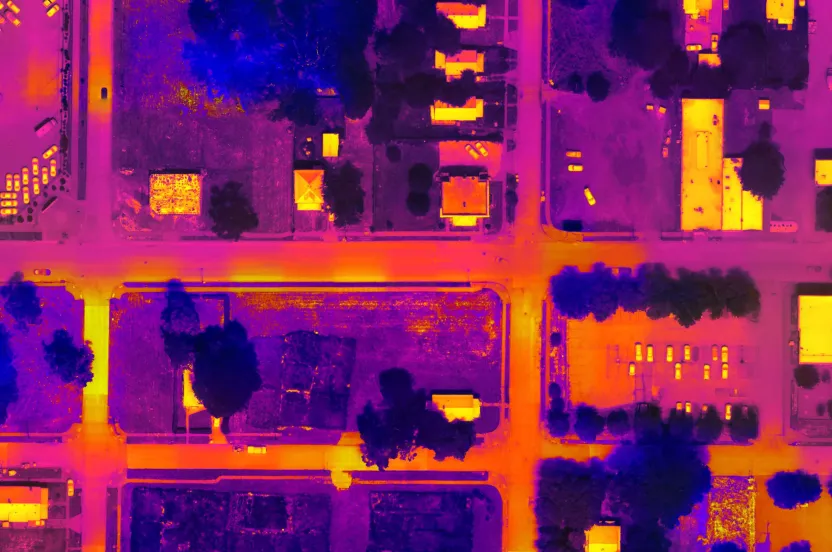Give before midnight on July 31 to double your impact where trees need us most. CHOOSE A PROJECT
Planting Future-Proof Trees In A Warmer World
An interactive mapping tool forecasts the future of plant hardiness zones as climate change warms the U.S.
May 2, 2024

The Arbor Day Foundation collaborates with an extensive network of partners to ensure we plant the right trees in the right place and at the right time.
But in an ever-changing global ecosystem, identifying the right tree or the right place can’t solely be based on the ‘right now.’
As climate change intensifies, the Arbor Day Foundation is sharpening its focus on the future so the trees it helps plant today can thrive for decades to come. That begins with understanding how a warming climate can impact a tree’s ability to grow in different parts of the country.
Historically, Plant Hardiness Zone Maps from the U.S. Department of Agriculture have been used to divide the country into regions, based on averages of annual minimum temperatures. Each of the 13 plant hardiness zones covers a 10-degree range. For example, plants in southern Florida (zone 10) should be expected to grow in temperatures as low as 30 to 40 degrees Fahrenheit, while plants in northern Minnesota (zone 3) should be able to withstand cold extremes from -30 to -40 degrees.

Use your ZIP code to track potential shifts in plant hardiness zones through the end of the century.
By compiling data and a series of these USDA maps from 2012 and prior, the Arbor Day Foundation and its partner Davey Tree Expert Company developed its own future hardiness zone map. The interactive tool predicts changes in where the lines will be drawn for plant hardiness zones over the course of this century. The map is separated into four time periods: Past (1980-2009), Present (2010-2039), Mid-Century (2040-2069), and Late Century (2070-2099). Users can search for specific ZIP codes throughout the contiguous U.S. to identify their current plant hardiness zone and how it’s expected to change over the next several decades. There are also two versions of those predictions because climate change is so closely tied to greenhouse gas emissions. One, the ‘best-scenario,’ is based on a low-emission future. The other ‘worst-scenario’ tracks with a high-emission future. Right now, global emission patterns most closely follow the latter.
Why does it matter?
The projections from the future hardiness zone map are already beginning to align with reality. The U.S. Department of Agriculture released its most updated Plant Hardiness Zone map in 2023, and it indicated a warming of about 2.5 degrees Fahrenheit when compared to the 2012 edition of the map. Many of the plant hardiness zones shifted northward, indicating that historically colder places are getting warmer and warmer places are getting even hotter. The changes fall in line with the Arbor Day Foundation’s future hardiness zone map, which also predicts significant warming throughout the United States.
Again, these predictions are helpful as tree planters begin to navigate the changing relevance of native tree species. An analysis of this data from the Washington Post showed, for example, that by the end of the century, the Alabama Cherry Tree may be unable to flourish in Montgomery. Of course, that doesn’t mean homeowners should rush out right now to chop down those cherry trees.
Using the future zones as a guide, not a rule
These future hardiness zone maps are meant to be treated as a reminder of the impact climate change will have on what trees will survive and thrive in the coming decades. They are not meant to be treated as a guidebook for selecting trees to plant today, according to Arbor Day Foundation Program Manager Pete Smith.
“Nature doesn’t follow rules. Mother Nature has her own schedule and she follows guidelines,” he said.
These shifts created by the warming climate are not happening overnight. Homeowners in the future, then, will likely have a range of new species options to choose from when planting trees in their yards and they should embrace them all.
“Being intentional with what you plant starts with identifying the species you already have on your property. You cannot act on your own landscape without knowing what you already have,” Smith said. “When it comes to trees and shrubs and other plants, do whatever you can do to add diversity at any scale.”
Diversification in any ecosystem is critical to establishing resilience against extreme weather, invasive insects, or disease. Smith said monocultures can be easily threatened and cause a widespread wipeout, as evidenced by the impact of dutch elm disease and emerald ash borer.
“The lack of diversity increases the risk of loss,” Smith said. “We want to minimize loss and maximize beauty. Your choice of tree or shrub is related to how well your yard adapts, and it can be a process to find that right balance.”
While the Arbor Day Foundation and its supporters continue to use trees to aid in the fight against climate change, we also need to learn how to adapt to it. The effort to put more trees in the ground is too important to treat arbitrarily. We need to understand how to plant for success. The Future Hardiness Zone Map offers critical guidance on how and where to plant trees that will stand up to the weather of today and thrive in the climate of tomorrow.



